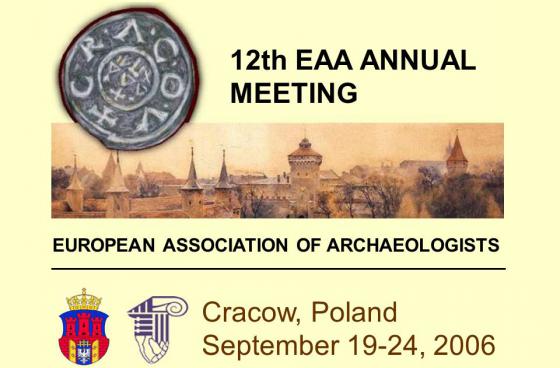
In October 2006, 3 EXARC members organised a session presenting experimental archaeology to a wider audience of archaeologists at the conference of the European Association of Archaeologists in Kraków, Poland.
Experimental archaeology, if undertaken in a serious way and using basic scientific methods, can establish high quality insight in archaeological research. The limitations of this instrument will be equally stressed as well as which activities can be seen as experimental archaeology and which should be abandoned.
During this session, examples were shown highlighting the latest developments by means of which it was made clear where the qualities lie for using this instrument in archaeology. Examples served the discussion on theory and methodology of experimental programs as executed in collaboration with scientific institutes all over Europe.
In Kraków, some of those involved in European experimental archaeology were invited to share their experience in the past and viewpoints in the future in this specific field. Self-criticism as well as a combination of short speeches and a good discussion was encouraged.
Experimental archaeology is more and more misunderstood as living archaeology, hands on archaeological activities or education. The goal of the session, however, was to get an overview of trends in experimental archaeology, to be able to bend the future of the profession towards a more quality based approach. For this it is inevitable for all professionals to get involved into a European Network on this subject, initiatives to this are sprouting in different regions of Europe already.
This session focused on the theoretical aspects and problems of experimental archaeology. Specific experimental results and case studies were presented as example, but were not the main purpose or content of a whole presentation.
Questions that served as inspiration for the speakers
- The future development of experimental archaeology. How do we do about our heritage in processualistic archaeology? Does such a thing as a post-processual experimental archaeology exists?
- How can experimental archaeology contribute to archaeological theory-building?
- What are the limitations (if any) to the contributions possible from experimental archaeology?
- What do we do about the confusing concepts? Investigate the limits and overlap of “living archaeology” and “experimental archaeology”.
- The connection and relation between the academic world and the archaeological parks. How do we secure a dialogue for the benefit of both? How can we educate the students to perform experimental archaeology in the best way?
- Do experimental archaeology and archaeological parks have to divorce as archaeological parks becomes an increasing economic interest (the growing economy in tourism)?
An overview of the papers
- Roeland Paardekooper, Eindhoven (NL): Introduction: Practicabilities of experiments;
- Martin Schmidt, Hannover (DE): Baking Bread and Grinding Corn - Publishing old Experiments before making New;
- Elisabeth Peacock, Trondheim (NO): The Science Challenge of Experimental Archaeology;
- Bruce Bradley(a.o.), Exeter (UK): Experimental Reproduction of Solutrean Technology based on Refitting and Technological Analysis of Les Maîtreaux;
- Tim Weski, München (DE): The Value of Experimental Archaeology for Reconstructing Ancient Seafaring;
- Marianne Rasmussen, Lejre (DK): Building Houses and Building Theories;
- Eva Andersson & Linda Mårtensson, Copenhagen (DK): Principles for Experimental Textile Archaeology - Problems and Possibilities;
- Thomas Terberger, Greifswald (DE): Experiments in manufacturing decorated objects of the Maglemose period;
- Julia Heeb-Wiecken, Exeter (UK): Thinking through Technology: an Experimental Approach to the Cognition of Prehistoric Copper Working.
